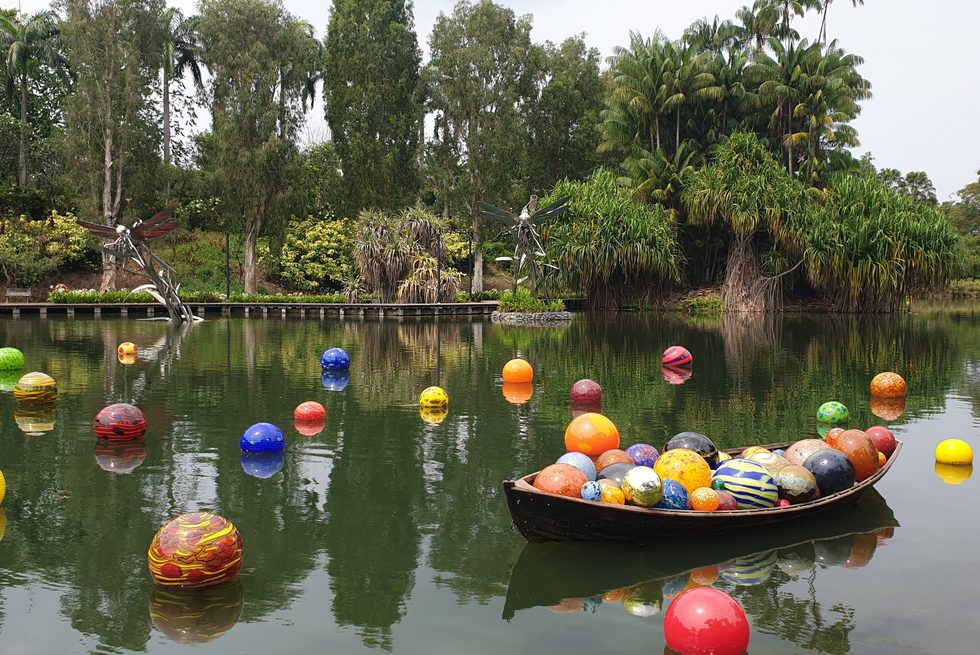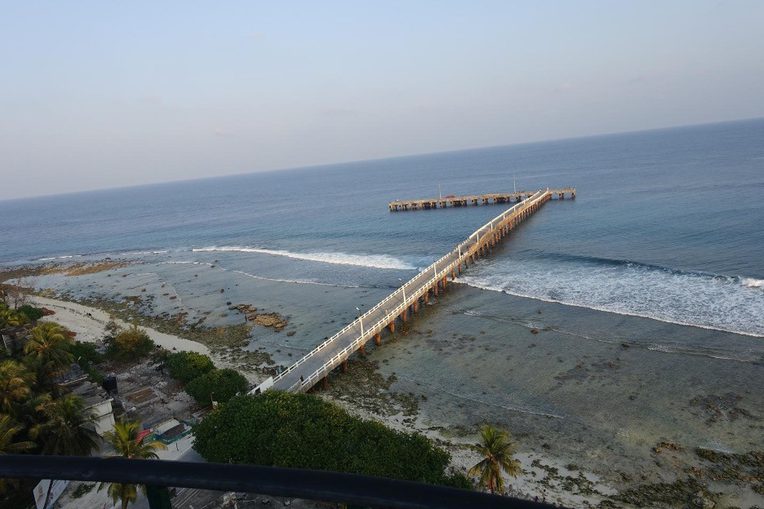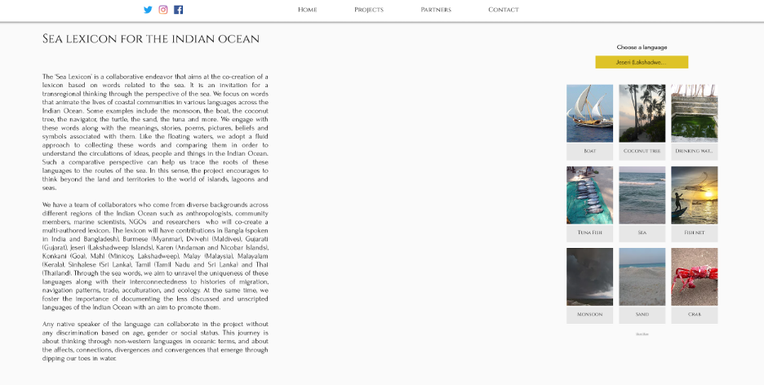Remote to Connected Ethnography: Reflections from the Indian Ocean’s Lakshadweep Islands
From the Series: A Collaboratory of Indian Ocean Ethnographies
From the Series: A Collaboratory of Indian Ocean Ethnographies

This article is a reflexive account on conducting, as well as not being able to conduct, the ethnography of an archipelago during the first year and a half of the COVID-19 pandemic. I had finished all my coursework and had started the journey to undertake my doctoral dissertation fieldwork in Lakshadweep, starting in March 2020. Little did I know as I left my university in Singapore for a short visit to my home in Kerala, India, before starting fieldwork at the end of February 2020 that I was soon going to be stuck in a massive lockdown. The Lakshadweep islands are an archipelago of thirty-six inhabited, as well as uninhabited, islands off the coast of Kerala in the Arabian Sea of the Indian Ocean. Declared a Union Territory of India, ten of its islands are inhabited by approximately seventy thousand people who fall under the constitutional category of “Scheduled Tribes,” and the majority of whom follow Islam. Entry to the Lakshadweep islands is restricted based on the Laccadive, Minicoy and Amindivi Islands (Restriction on Entry and Residence) Rules which came into effect in 1967. The permit system regulates the number of people who can visit, move to, or reside on the islands. Just as I was going to travel there, the entry permit I had previously obtained to the Lakshadweep Islands got cancelled.
All of a sudden, my imminent entry to the field site, for which I had prepared for nearly two years, became impossible. I was stuck on the nearby coast of Kerala for ten months, while the field remained constantly on my mind, and yet, a distant dream. It was only in December 2020 that I received a new permit and was able to travel to the islands in January 2021. But soon, in April and May 2021, I was stuck again: this time in the field while the second wave of the pandemic in India raged on. Staying connected to the field during these uncertain days offered possibilities to rethink remote and connected ethnography. I explore these two concepts here and how, for me, they seemed to intertwine during these last 18 months. It wasn’t necessarily when I was away from the field that I was disconnected from it as I started to learn the Jeseri language (the spoken language in many islands of Lakshadweep) remotely. When I was in the field, it sometimes felt remote—needing to be translated and explained—by scholars from other regions. The pandemic taught me the limitations of doing ethnography “alone” and in an unconnected way. As I started building a lexicon of Jeseri terms that helped me understand people’s relations with space—a Sea Lexicon (further describe later)—I experienced trans-island friendships and collaborative research as a methodological and an epistemological necessity. The sailors, fellow scholars, and non-humans that I engaged within this process helped me find my bearings and explore a path forward.

Scholars have pointed out the limitations of conducting in-person ethnography during the pandemic (Wood, Rogers, Sivaramakrishnan, and Almeling 2020) and have offered propositions for conducting ethnography through patches and fragments (Gökçe, Varma, and Watanabe 2020). This paper draws lessons from island life during the construction of ethnography. Through the metaphor of islands, I argue that ethnography can be connected in isolation. Sloterdijk approaches islands as “world models in the world” (2016, 289). They are microcontinents that are worlds in themselves. At the same time, it is problematic to consider islands as remote and marginal spaces. Hussain argues that remote areas are produced by modernity and modernization (2015). Ardener maintains that remoteness need not be restricted to geographical peripheries (2012). Island studies scholars have long been arguing against the tropes of remoteness, dependency, and distance that are attributed to islands (DeLoughrey 2007; Hau’ofa 2008; Teaiwa 2015). The strand of relational thinking in island studies argues for a deterritorialized understanding of islands (DeLoughrey, 2007). It emphasizes the dynamic and shifting entanglements between the sea and the land. The Indian Ocean seascapes have been historically in connection with each other through sea and trade routes, as historians argue (Gupta et al. 2010). Juxtaposing this thinking to the practice of ethnography, can it be more connected and deterritorialized than distant or remote? My approach to connected ethnography in this discussion is through examples from the field. It highlights the importance of thinking through the ecological and beyond terrestrial boundaries.
The Lakshadweep islands remained a green zone as zero COVID-19 cases were reported here for almost a year. The only permitted movement was that of cargo ships carrying essential commodities from the Indian mainland. The seamen working on the ships that connected the mainland to Lakshadweep were not allowed to disembark. Some of them were stuck in the ship for up to two months, and the ship became their island. In a way, isolation was as significant as connection. Things, however, changed for the worse with the coming into effect of a new Standard Operating Protocol (SOP). The new SOP removed the strict rules of quarantine on the mainland and on islands for visitors, who could be potential carriers of the virus. The Lakshadweep islanders resisted and protested the opening of the islands (something that would have benefitted mainly urban tourists who wanted to escape to this remote coral paradise), and they demanded isolation as hospital facilities are limited on the island.

I had reached the island capital and completed two weeks of quarantine when the first COVID-19 case was reported. The situation became tense and uncertainty loomed. I was at the Port Office when Azhar, a long-term collaborator, told me that they would fight COVID-19 as they had been “fighting” the rough sea and tides. Many islanders shared this perspective of facing the pandemic like they would a rough sea—with courage. I decided to learn more about their sailing techniques and patterns of navigation in order to understand this perspective.
The Lakshadweep islanders follow a system of navigation called ‘Rahmani’ (Varadarajan 2004) that helps them navigate mainland India’s coasts. In our conversation in December 2018, K K Malmi, an eminent sailor from the island, told me the importance of following the stars and tides to know the exact location for returning home. The navigators are careful to set sail only when the winds are favorable and stay back otherwise. It is nearly impossible to navigate the rough Indian Ocean sea alone. Therefore, building and sailing the dhow (odam) of an owner (keyi), includes a division of labor which involves a captain (malmi), a carpenter (bandeyi), a cook (phandari), and sailors (kilasis). These journeys are collaborative activities to navigate, catch fish, and are accompanied by the rhythms of odam songs, ocean diving sprees to fight the heat, and Islamic prayers. Occurrences of rough weather and strong winds are recalled as moments of courage, valor, and shared kinship. The sailors narrate stories of how dolphins guide them back to their home islands when stranded. Until today, the memory of running an odam remains vivid in the words of the islanders as examples of collaborative survival. Their relation with the sea, its ecology of species, winds, and stars, signifies a bond beyond the confines of human isolation.
During the early days of the pandemic, I used to visit the islanders’ transit houses in Kerala, only to find them locked. I was not able to do online interviews due to poor internet connectivity on the islands (see Namboothri et al.’s essay on the difficulties of conducting online research during pandemic times in the Lakshadweep in this series). Later, I started recollecting the sailors’ words about how waiting for favorable winds is important whenever I felt stuck—which was often. During such times, I tried to stay in touch with my island friends, sharing experiences and hearing each other’s worries whenever telephone conversations or texts were possible. On the eve of Eid (the completion of the month of Ramadan) in May 2020, I telephoned my friend Mahroof to convey my well-wishes. “All the mosques here are shut. Prayers will happen only in our homes. We are not meeting each other. It is the most uncertain of times,” said Mahroof with an undertone of pain and confusion. Some islanders expressed concerns about not being able to conduct special prayers to ward off the pandemic which they generally do during rough seasons such as those when cyclones occur.

Later, when I was able to conduct fieldwork again, the new normal of masks, quarantine, risks, and social distancing kept being very challenging. Staying close to my neighborhood during the “corona curfew,” following the second wave of the pandemic in the field, was an experience involving the affective (see Miriam Jaehn’s moving essay in this series about remote fieldwork and affect). I also observed how the islanders retained connections with the non-human world of corals and lagoons, while socially distancing themselves from humans. “Underwater is the only safe haven, and we cannot exist without it,” said a friend of mine. Staying first “away from the field” and later “in the field” (or more specifically “on the water”) during the pandemic taught me the limitations of doing ethnography single-handedly. It dawned on me that collaborations were the only way forward. In the previous year, I had joined the Southern Collective, an Indian Ocean-wide collaboratory. While time felt tied to uncertainty, we designed and built an Indian Ocean Sea Lexicon starting with terms in Jeseri and then moving to other languages, such as Malayalam, etc. I was glad to anchor this project and involve the participation of both scholars as well as fishermen; we aimed at truly co-creating knowledge despite relying on our electronic devices for connection to the world outside of screens. Soon we would include other languages, so we could understand the ground-up connections of various communities with the sea through their relations with particular words and objects. The need for a collective to sail the Indian Ocean waters reflects, for me, a similar co-creation of connected ethnographies. Juxtaposing these isolated yet connected bits enables us to think beyond land borders and the limits of conducting in-person ethnography. In conclusion, thinking through seascapes and ideas of collaborative survival can offer possibilities for navigating the challenges of remote and distant ethnography, as well as help to reinforce its “…generative, shared and restorative potentials…” (Jalais and Sridhar, this series).

Ardener, Edwin. 2012. “Remote Areas: Some Theoretical Considerations.” HAU: Journal of Ethnographic Theory 2, no. 1: 519-533.
DeLoughrey, Elizabeth M. 2007. Routes and Roots: Navigating Caribbean and Pacific Island Literatures. Honolulu: University of Hawai’i Press.
Günel, Gökçe, Saiba Varma, and Chika Watanabe. 2020. “A Manifesto for Patchwork Ethnography.” Member Voices, Fieldsights, June 9.
Gupta, Pamila, Isabel Hofmeyr, and Michael Naylor Pearson, eds. 2010. Eyes across the water: Navigating the Indian Ocean. Pretoria: Unisa Press.
Hauʹofa, Epeli. 2008. We Are The Ocean: Selected Works. Honolulu: University of Hawaii Press.
Hussain, Shafqat. 2015. Remoteness and Modernity: Transformation and Continuity in Northern Pakistan. New Haven, Conn.: Yale University Press.
Sloterdijk, Peter. 2016. Foams: Spheres Volume III. Translated by Wieland Hoban. Cambridge, Mass.: Semiotext(e).
Teaiwa, Katerina Martina. 2015. Consuming Ocean Island: Stories of People and Phosphate From Banaba. Bloomington: Indiana University Press.
Varadarajan, Lotika, ed. 2004. The Rahmani of M. P. Kunhikunhi Malmi of Kavaratti: A Sailing Manual of Lakshadweep. New Delhi: Manohar Publishers.
Wood, Elisabeth Jean, Douglas Rogers, K. Sivaramakrishnan, and Rene Almeling. 2020. “Resuming Field Research in Pandemic Times.” Items: Insights from the Social Sciences, Social Science Research Council, May 21, 2020.